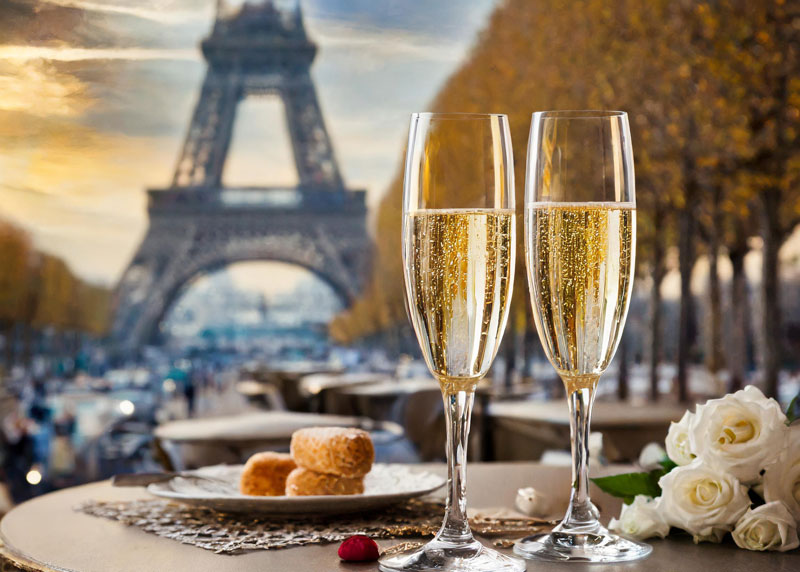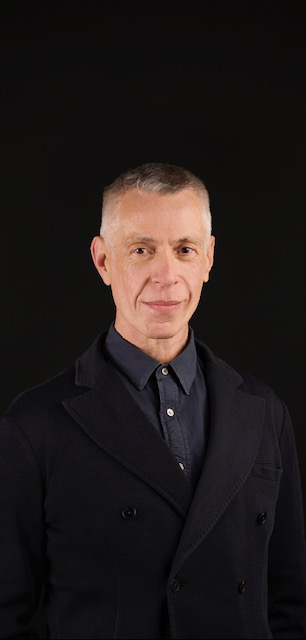Offering escape in a world of volatility
Author: Kelly Anderson
Posted on Sep 21, 2024
Category: UNB Fredericton , Arts , Inspiring Stories

The world’s most prestigious fashion houses, top winemakers and leading luxury retailers might be surprised to learn that John Gerhardt (BA'85), the retailing visionary and international powerhouse in luxury branding and creative direction, grew up in smalltown Fredericton, New Brunswick. But the award-winning innovator says that his formative years, including those spent studying for a degree in English literature from the University of New Brunswick, were key to helping him flourish.
 When John takes my call from his stunning Paris apartment, the city where he’s currently based for his role as Director, Global Creative for Moët Hennessy (the wines and spirits division of Moët Hennessy - Louis Vuitton, known as LVMH), his passion for what he does comes through immediately. He speaks easily about his fascinating and very successful career in luxury branding, retail and design – and about his humble roots.
When John takes my call from his stunning Paris apartment, the city where he’s currently based for his role as Director, Global Creative for Moët Hennessy (the wines and spirits division of Moët Hennessy - Louis Vuitton, known as LVMH), his passion for what he does comes through immediately. He speaks easily about his fascinating and very successful career in luxury branding, retail and design – and about his humble roots.
“I always knew I wanted to write and study literature, and fortunately, UNB had an illustrious history in that program. I was attracted to publishing and immensely enjoyed the writing program, but more than that, my time at UNB was a huge maturation experience. It allowed me to realize who I was, to find my tribe, to build my confidence and flourish from that,” he recounts.
The self-described “kid from New Brunswick who used to run to the corner store to buy GQ magazine and dream of another world” made his way to Toronto to seek out the avant-garde design label, Parachute, which outfitted the biggest pop stars of the ‘80s. He landed the job, starting as a salesperson in the retail store in Yorkville and quickly moving into management. He then began styling for photography, putting together magazine images, first in Toronto and then in New York City. Fairchild Publications asked him to write as well as style for a men’s fashion periodical. “I was able to tap into my UNB background, which was very empowering.”
He soon became fashion director for Flare magazine, where he styled, wrote and created stories for the iconic Canadian glossy. Then, in 2004, he was found by Holt Renfrew (Selfridges Group), who tapped him for the creative director job.
“Holt Renfrew was the pinnacle in Canada at the time, and the offer was hugely flattering. But it was different from publishing: now I had to turn art into commerce. From the beginning of my career, it was about creating beauty. But in retail, you have to transform beauty into buying. I spent seven years overseeing Holt Renfrew’s branding, advertising, in-store display and communications. We were tasked with taking the brand to a new consumer, making it more relevant for everyone. We did very well: we grew from a $400 million to $700 million business in that time, much of it attributed to branding and the new image.” (In fact, the hugely successful rebrand earned John a spot in Time magazine’s “The Design 100—The People and Ideas Behind Today’s Most Influential Design” issue.)
It was then that LVMH came calling. John became senior vice president of Branding and Creative for DFS Group (one of LVMH’s Maisons) from 2012 to 2019 in Hong Kong and New York, where he led the rebranding of the multi-billion-dollar luxury retailer, monetizing marketing campaigns for brands such as Estée Lauder, Tiffany, Dior, Burberry and Hermès. “Our strategy was to stop talking about being a duty-free brand and become a luxury travel brand. Travel was trending, and we began seeing people veer away from acquisitions and spend on experiences instead. We saw a great opportunity to be part of their experience. We became a global presence in retail, growing from $4 billion to $5 billion during my tenure.”
When the CEO of DFS Group moved to Moët Hennessy (a conglomerate of 27 wines and spirits Maisons), he tapped John to come with him. John has been director of Global Creative for five years now, joking that he’s “moved from handbags to booze.”
“Now, I’m selling something ephemeral, something experiential that consumers equate with a special occasion. Some of the champagne houses have a lineage of over 200 years. My job is to find, or re-find, the soul of these brands, and move from selling exclusivity to inclusivity, from aspiration to inspiration.”
John says that the retail world is changing as we speak, and it makes his job challenging. “With our delicate environment, economies in volatility, governments in transition…we have to find a way into people’s lives that bears relevance. What we offer is a bit of an escape, a reprieve. That’s what luxury can do in a volatile world – it’s an outlet. Our most fundamental purpose is to make people feel special.”
He admits that keeping up with the pace of change in marketing and branding is arduous. “People’s values and priorities are changing. It’s not just about selling the value of the product any longer; it’s about selling the values of the brand. Consumers want to buy products that are made sustainably. They’re shopping through their values, not just their desires. And this trend is continuing to grow. The earth is compromised right now, and what we need is beyond sustainability – it’s regeneration. We now look for energy efficiencies in manufacturing, use earth-friendly packaging and produce campaigns that have zero footprint on the planet. The consumer will hold us accountable. As they should.”
When asked what he’s most proud of in his career to-date, John becomes pensive. “You know, I was just talking with my dad about this a few years back, grappling with the question of whether I’m making a difference in the world or not. We concluded that I’m giving people a distraction in life – an escape. I’m selling the ability to bring people together, to celebrate, to be convivial, to feel special. That makes me happy, and I think it makes a difference.”
He continues to ponder the question. “I think maybe what I’m most proud of is that I was able to keep the dreams of that kid from New Brunswick with the GQ magazines alive. This career sounds romantic – exploring the world, working on exciting projects with famous brands and influential people. The word – and concept of – luxury always gets a reaction from people. They mistakenly think my lifestyle, with my partner Boris, must model what I produce and conceive. There’s actually a lot of hard work and sacrifice to being in such a specialized discipline. It required moving out of my comfort zone, outside of what was familiar. I had to break down the stereotype of being from the Maritimes, then of being from Canada. I moved and have travelled to a lot of places around the world, learning from each one of them. Now, I’m happy to live every day in that space ‘outside the comfort zone’, and it’s led to a sustainable career that I love. I’ve been very fortunate.”